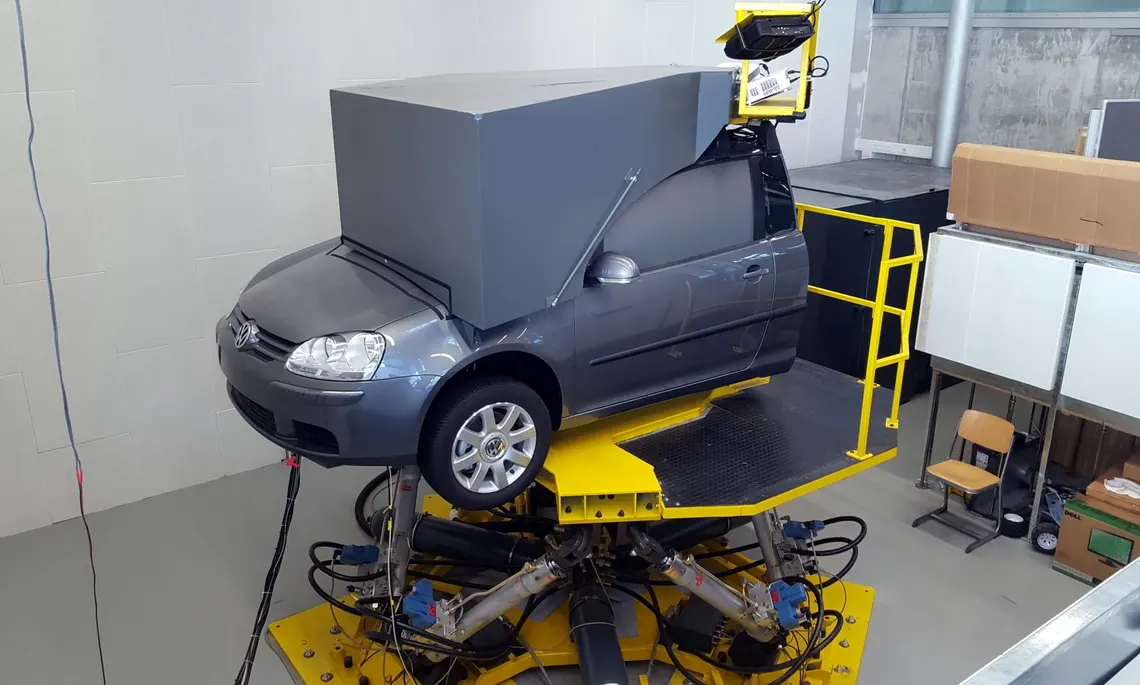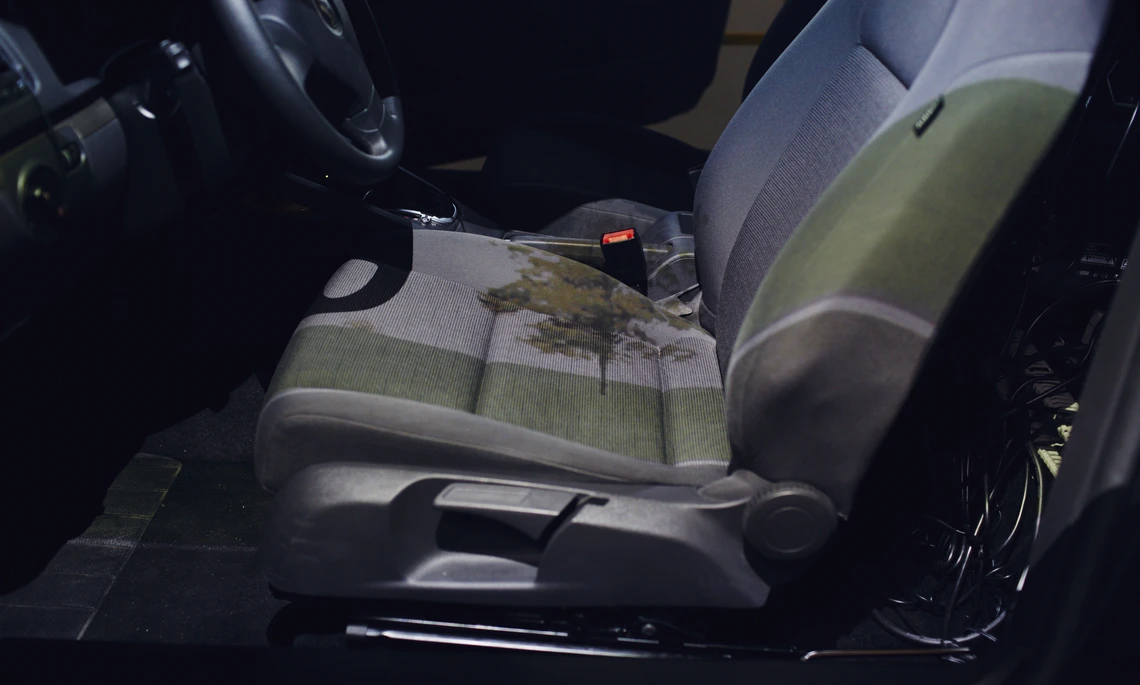The hexapod test bench, actually a dynamic driving simulator at THI, is one of the unique and mobile highlights and is part of the CARISSMA research centre.
Goals and idea
Automated vehicles are on the verge to market introduction. But how will people interact with vehicles at different levels of automation in the future? What human factors will play a role in this? And will the population accept automated vehicles at all? Highly and fully automated vehicles can currently only be used on public roads under strict safety regulations, which makes user studies under real conditions a challenge. In addition, these trials are not reproducible and thus not directly comparable with each other.
At THI, it is possible to conduct user studies in a dynamic driving simulator (hexapod test bench) or in virtual reality. In doing so, the researchers can draw on extensive expertise in the areas of automated driving, "human factors", augmented/virtual reality, usability research and user experience design. The spectrum of user studies ranges from basic research and the evaluation of driving behavior and user requirements to the implementation and testing of prototypes for future interaction concepts or human-machine interfaces in vehicles. The goal is to increase both safety and the user experience. This is done by incorporating state-of-the-art measurement instruments and processes, such as eye tracking, ECG or EEG.
One of the central goals of the further development of the laboratory is to establish real-time networking with other simulators and laboratories at THI, in particular the HiL laboratory, the Car2X laboratory or also the virtual reality laboratory, in order to realize the vision of a so-called "mixed reality" test environment (goal in the SAFIR IP1 project)..
Laboratory equipment and activities
In addition to the complete hexapod test bench, the laboratory is equipped with many workstations, equipped with high-performance computers and various simulation software. The hexapod test stand is a self-adaptation and optimisation of THI.
Assemblies of the complete driving simulator system:
- Driving cabin
- Motion platform
- Hydraulic power unit
- Control computer
Cabin equipment:
- Original section from the 5 series VW Golf, automatic
- Video surveillance and communication system between cockpits and control desk
- Functions of the cockpit
- Steering / Gas / Brake
- Rear-view mirror visualization - Highly sensitive and steering with steering torque and sensitive force feedback
- Four-channel outdoor viewing system with video projectors (front/front/side/side)
- Sound simulations for engine sound, pass-by sound
Motion platform component:
It is the connecting platform between the driver's cab and the six hydraulic cylinders and is used to control the cylinders by means of individually equipped sensors and control block.
The control cabinet (built-in control computer) represents the core of the electronic control system. It performs the following tasks in the "motion platform control" program:
- Monitoring the operating sequence for safe operation of the motion platform
- Control of the platform's motion sequence according to the motion data calculated by the "CarMaker" program
- Determination of the cylinder deflections for all six axes from the motion data in real time
- Powerful workstations for calculation and visualization
- Simulation software: CarMaker, Matlab/Simulink
In the laboratory there are sufficient workstations for students. Internships such as vehicle integration and testing are offered in the summer semester for courses of study at the Faculty of Electrical Engineering and Computer Science. Here, a wide variety of questions from the subject areas of driver assistance systems, vehicle dynamics and simulations are dealt with.
Numerous interns, also from international partner universities, and final theses are supervised and completed per semester directly in the laboratory and in these subject areas.
Possible courses
- Vehicle integration & test
- Vehicle dynamics (longitudinal and lateral dynamics)
- Basics of the Human-Machine-Interface
The research activities in the Hexapode laboratory (C020) are based on the research programme of the CARISSMA research and test centre. Various working groups are working on the overarching task of contributing to the long-term goal of zero road deaths with innovative developments and new approaches. The driving simulator is used especially for test person studies to examine pre-crash scenarios and human-machine interface (HMI) concepts of various vehicle safety functions.
Laboratory management and team
Prof. Dr. techn. Priv.-Doz. Andreas Riener
Phone: +49 841 9348-2833
Room: B210
E-Mail: Andreas.Riener@thi.de









![[Translate to English:] Logo Akkreditierungsrat: Systemakkreditiert](/fileadmin/_processed_/2/8/csm_AR-Siegel_Systemakkreditierung_bc4ea3377d.webp)








![[Translate to English:] Logo IHK Ausbildungsbetrieb 2023](/fileadmin/_processed_/6/0/csm_IHK_Ausbildungsbetrieb_digital_2023_6850f47537.webp)


